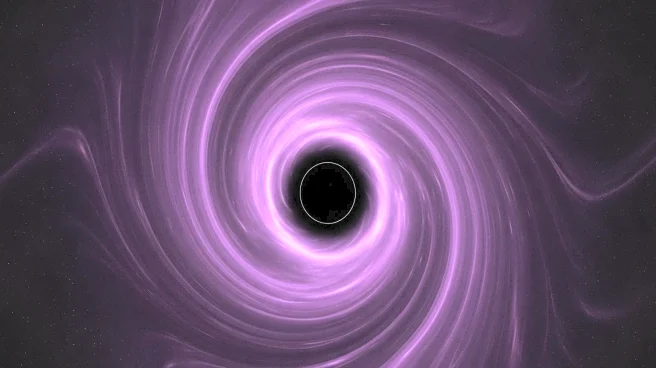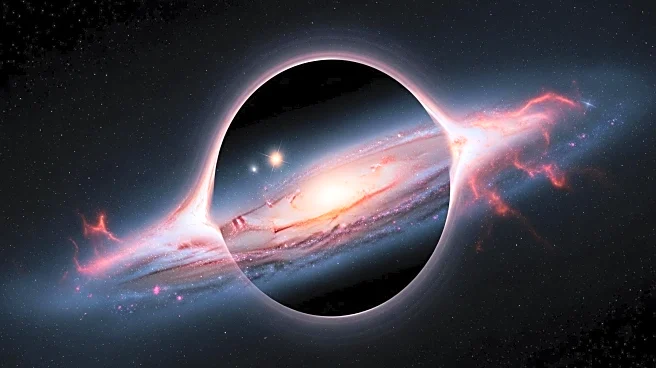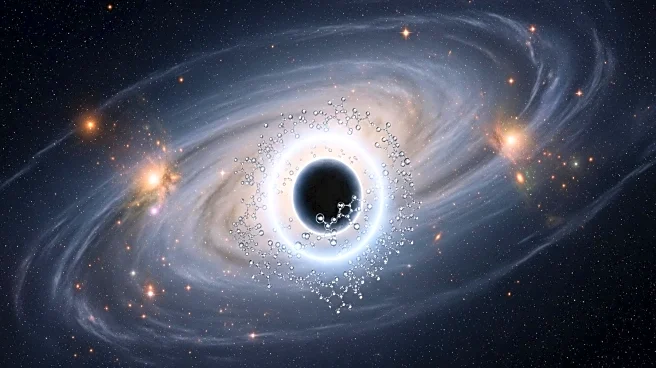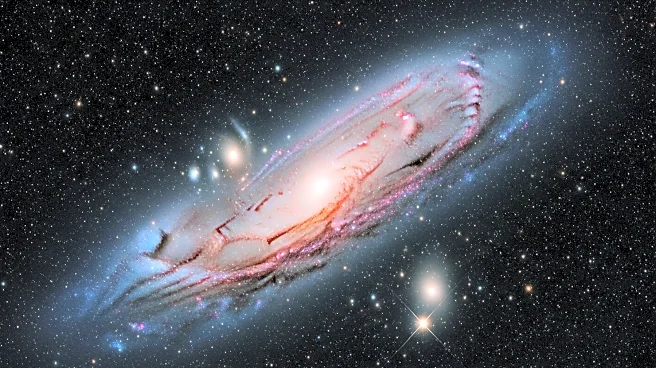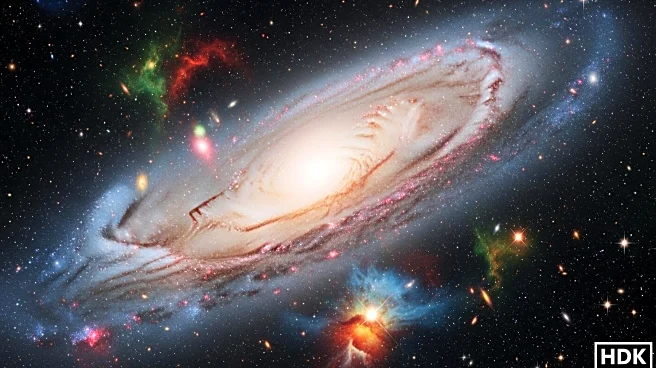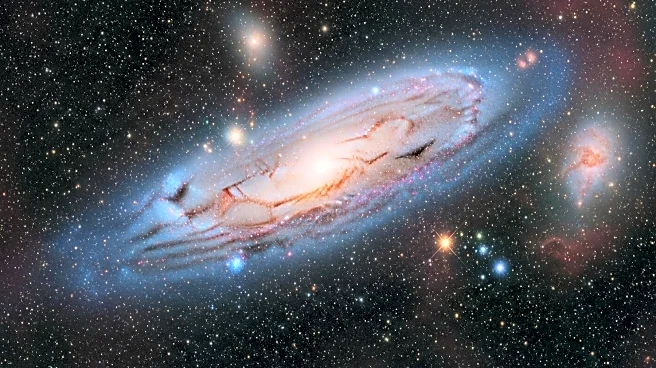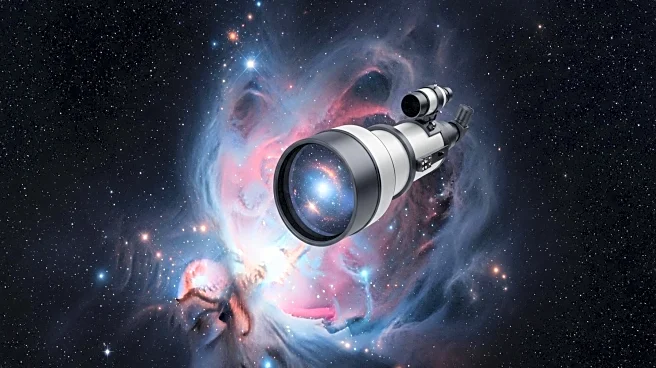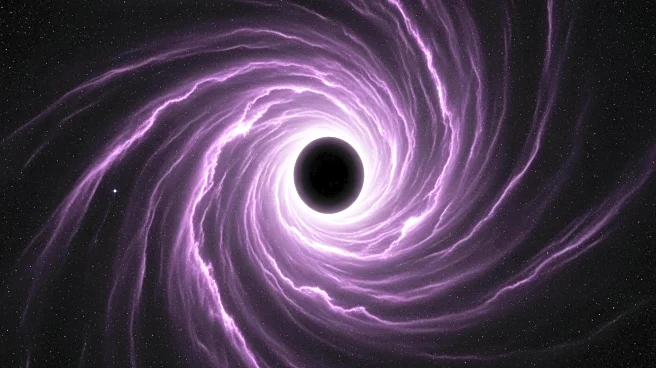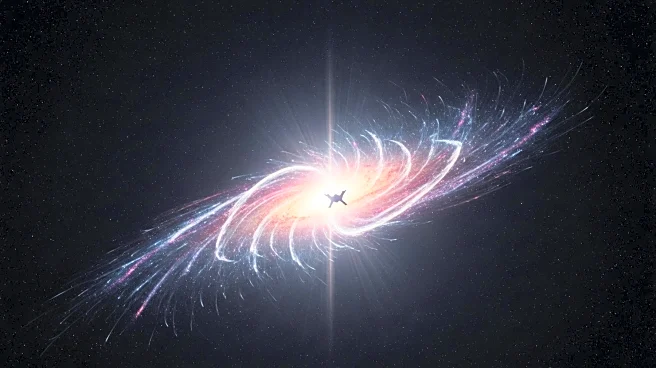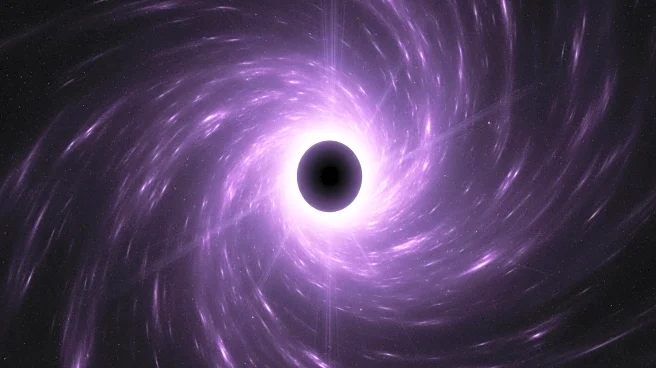What's Happening?
A black hole has been discovered growing at 2.4 times the Eddington limit, a theoretical boundary for black hole growth. This finding, observed by the James Webb Space Telescope, suggests that current cosmological models may be incomplete. The Eddington limit is based on the balance between radiation pressure and gravitational pull, and exceeding it indicates that there may be unknown factors influencing black hole growth. This discovery adds to a series of observations that challenge existing theories about the behavior and evolution of black holes.
Why It's Important?
The discovery of a black hole exceeding the Eddington limit has significant implications for astrophysics and our understanding of the Universe. It suggests that there are gaps in current cosmological models, which could lead to new theories about black hole formation and growth. This could impact our understanding of galaxy evolution and the role of black holes in the cosmos. The findings may also prompt further research into the fundamental laws of physics and the forces governing the Universe.
What's Next?
Astrophysicists will likely conduct additional observations and develop new models to explain the rapid growth of this black hole. This could involve revisiting existing theories and exploring new hypotheses about the forces at play in black hole dynamics. The findings may also influence future research priorities and funding in the field of astrophysics.

